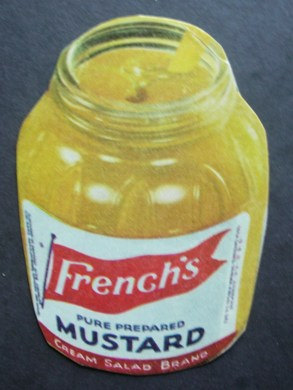August 1, 2015 (Gephardt Daily) – Mustard seeds have been used for culinary purposes since humans could use fire.
You will find mention of them in the Bible.
The plants were cultivated in Palestine and then made their way to Egypt where they have been found in the pyramids.
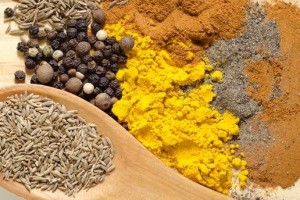
The seeds were chewed during meals, quite possibly to disguise the rank flavor of spoiled meat. The Romans were known to crush the seeds and mix them with a fish brine to flavor both fish and meat.
Roman cooks would combine the seeds with unfermented grape juice to create what they called “burning juice”, or ‘mustum ardens’ in Latin (hence our now familiar English word “mustard”.)
The popularity of mustard grew in Rome and swept into their conquered territories.
In an article from “MadeHow.com,”it is reported that by the fourth century, mustard was being used in Gaul and Burgundy. Pope John XXII was so enamored of its flavor that he created a new office, grand moutardier du pape (great mustard-maker to the pope), and installed his nephew as the first “Great Mustard Maker.”

In 1390, the French government issued regulations for the manufacture of mustard, decreeing that it contain nothing more than “good seed and suitable vinegar.”
Two hundred years later, corporations of vinegar and mustard manufacturers were founded at Orleans and Dijon.
Mustard popularity increased in the eighteenth century, thanks to two innovators.

An Englishwoman named Clements developed a recipe that combined mustard powder with water. She traveled the countryside selling her product, keeping its ingredients a secret. King George I is said to have been a frequent customer.
In the Burgundy region of France, most famous for its wines, a little town called Dijon embraced mustard and began making its own variety, substituting the unfermented grape juice with vinegar. To this day, Dijon, France is still known as the mustard capital of the world for its unique and sharp tasting Dijon mustard
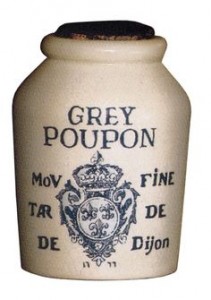
In 1777, one of the most famous names in mustard was created when Maurice Grey, who had invented a machine to crush, grind and sieve seeds, joined forces with Auguste Poupon. The resulting Grey-Poupon Dijon mustard is made from brown or black mustard seeds that have been mixed with white wine.
In 1804, a British flour miller named Jeremiah Colman expanded his business to include the milling of mustard seeds. His process for producing his dry mustard is virtually unchanged since that time, with the only alteration being the use of brown seeds instead of black ones. Brown and white seeds are ground separately and then sifted through silk to filter out the seed hulls and bran. The two mustards are then blended and poured into tins.
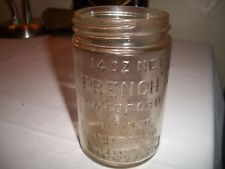
According to “HowIFoundOut.com,” yellow mustard didn’t come along until the turn of the 20th century. In 1884, two brothers by the name of Robert and George French bought a flourmill in Rochester, New York after their previous flourmill upstate burned down. They named the mill the R.T. French Company. When Robert passed away, George’s other brother, Francis, came aboard to help the family business.
In 1904, George began experimenting with “creamy salad mustard”. He added turmeric to the traditional recipe for added presentation and color. Yellow mustard premiered at the St. Louis World’s Fair in 1904 as a condiment to put on hot dogs to great fanfare. The rest, as it were, is mustard history
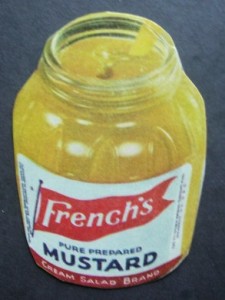
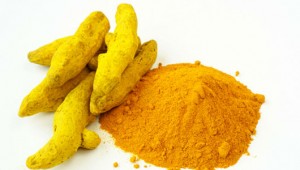
Turmeric has quite a history itself. It is a common ingredient in many South Asian and Indian dishes. It provides an earthy, slightly bitter taste that complements many curries. In addition, it isn’t just the rhizome powder that is used for cooking, but the whole plant. The leaves of the turmeric plant are used in many Indonesian recipes due to the bountifulness of the plant in the region and the sharp flavor of the leaves.
Throughout the generations of living off of the land in the region, people have discovered that turmeric possesses many medicinal qualities. Traditionally, it has been used an anti-inflammatory, antiseptic, and a guard against liver damage.
In fact, the American Cancer Society has officially stated that curcumin, the active ingredient in turmeric, is an antioxidant and has shown in preliminary studies to kill cancer cells in lab samples.
Plus, it has been found to reduce the growth of several different forms of cancer cells and tumors in lab animals. The United States Institute of Health rated turmeric as “possibly effective” for Osteoarthritis and upset stomach, with research still pending.
Turmeric began to make its way west during the 12th and 13th centuries. In medieval England, turmeric was often called “Indian saffron” since it was often used as a cheaper alternative to the much more pricey saffron.
In 1280, Marco Polo wrote in his memoirs that turmeric was a vegetable “with the properties of saffron, though it is not really saffron”.

In the 18th century, turmeric was beginning to be grown in Caribbean countries, where the climate was similar to South Asia. Jamaica became a big grower of turmeric and to this day, rhizome powder is still used in Jamaican cuisine.

The process by which mustard is made has not changed substantially over the years. The seeds are cleaned, crushed, sieved, and sifted. A variety of liquids such as wine and vinegar are added to make prepared mustards.
Just like Mrs. Clements of Great Britain, however, manufacturers are still secretive about the precise measurements of each ingredient.
What is you’re favorite way to use mustard? Leave us a comment below.
There’s more about mustard in books:
Jordan, Michele Anna. The Good Cook’s Book of Mustard. Reading, Massachusetts: Addison-Wesley, 1994.
Lang, Jenifer Harvey, ed. Larousse Gastronomique. New York: Crown Publishers, 1988, reprinted 1998.
Roberts-Dominguez, Jan. The Mustard Book. New York: Macmillan, 1993.

